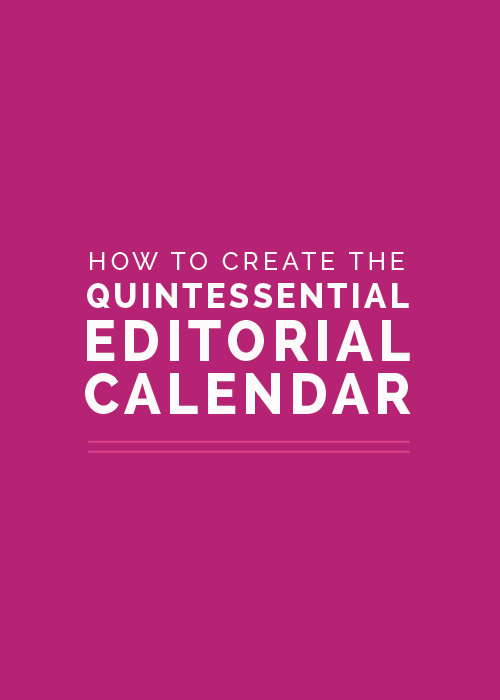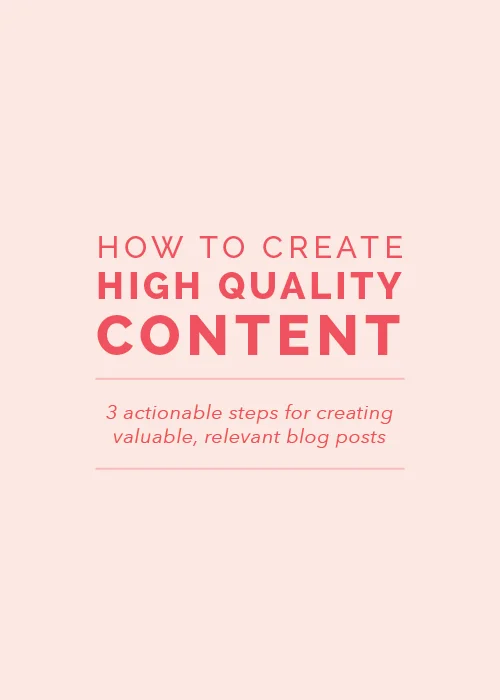It’s 9:00pm on Tuesday night.
You’ve committed to posting 3 times a week on your blog and your next post is due tomorrow morning, but inevitably, you’ve waited until the last minute. You’re tired, uninspired, and frustrated. With no idea what to write about, you sit and stare blankly at your computer, hoping that some bought of creativity will magically appear and help you crank out 1200 words of helpful, engaging content in time.
Can you relate?
In the midst of all the other business tasks on your ever-growing to-do list, blogging can often get overlooked, postponed, or rushed through. Which is tragic, especially when you consider all of the fantastic benefits that come from blogging for business.
But with the help of some planning, blogging can become less of a hassle and more of an exciting, effective tool for your business.
And that’s where this post comes in, to walk you through some helpful tips for creating a well-rounded editorial calendar that will help prevent last-minute scrambling, allow you more time to prepare and edit posts, and encourage you to become more strategic about the content you’re sharing.
1 | Brainstorm ahead of time
It’s much easier to create a well-rounded, high-quality editorial calendar when you have a large list of post ideas to choose from.
So before you sit down to fill in your editorial calendar each month, spend some time brainstorming.
Partner up with someone who’s familiar with your industry to bounce ideas off each other. Keep lists on your phone, in your planner, or on Trello and add to them as posts come to mind throughout your day. Take note of questions you’re asked frequently through email or in conversations with clients and customers and turn them into blog posts.
Always be on the lookout for content ideas, jot them down, and keep them on hand. It will make your job a thousand times easier when you go to plan out your content.
Are you struggling to come up with blog post ideas? Check out these past Elle & Company posts for some inspiration: 50 No-Fluff, Content-Rich Blog Post Ideas, How to Come Up with 60 Blog Post Ideas in 30 Minutes
2 | Plan far in advance
A little planning can go a long way. Spending 20 minutes at the end of each month to plan out your blog posts for the upcoming month can save you a lot of time and frustration in the long run.
You can even go so far as setting aside hours throughout the month to write, take photos, and edit to guard against last-minute scrambling and ensure that each post is well-written and thorough.
If you like keeping track of everything online, consider setting up a new calendar on Google Calendar or creating a Trello board to keep up with your editorial calendar.
For those of you who are pen and paper junkies (like myself), we have a blog planner workbook and a one-page blog calendar with monthly views in the Elle & Company Library to help you plan out your posts.
3 | Streamline your messaging
You have a great opportunity through your blog to streamline your messaging and use your content to benefit your business.
Do you have an upcoming offering or launch next month? Plant the seeds in your audience’s mind by gearing your content toward that product or service. Without promoting your offering too heavily, you can get strategic with your content and expose the benefits of your product or point out your audience’s need for your product before you announce it.
Do you want to build your authority on a certain area within your industry? Schedule more posts in your editorial calendar that revolve around that topic.
Kayla Itsines does a fantastic job of streamlining her messaging not only on her blog, but within her newsletter and social media accounts. Because she sells online guides for nutrition and exercise, her posts are geared toward building her authority on those subjects and providing helpful information for her audience, which builds trust, sparks interest, and leads to sales in the long-run.
With blog posts like “Healthy Lunch Swaps,” “Morning Vs. Night Workouts,” and real-life transformation posts of people using her guides, her messaging is consistent and in-line with her business goals.
Instead of just throwing together a hodgepodge of post ideas, get smart with what you’re sharing and, like Kayla, have a reason behind why you’re sharing it. This is where planning far in advance is especially helpful; it allows you to plan wisely and think through which content would benefit your business and help you reach your goals in the long-run.
4 | Vary the format of your content
While the scope of your blog may be narrow, you can mix things up and keep your audience engaged by varying the format of your content.
If you write a lot of how-to’s, consider incorporating a long list post into your editorial calendar. If you’re prone to writing narratives, switch things up by sharing an infographic. If you’ve been sharing a lot of round-ups and recaps, share a step-by-step tutorial instead.
Not only will the change of format be refreshing for your writing process, but your audience will enjoy the change, too.
Jamie from Spruce Rd. does this so well. By mixing up how-to’s with interactive quizzes, list posts, and narratives, she sparks readers’ interest and gets them excited to see her latest posts. While Jamie’s content is all geared around design, the varied formats of her posts keep her blog fresh and engaging.
5 | Consider high/low traffic days
Instead of scheduling posts at random, think through which days of the week will be the most beneficial for your blog.
Take a look at your blog analytics to see which days tend to receive the most traffic and schedule your more important posts for those high traffic days. If you don’t post on the weekends, put some thought into the content you’re posting on Friday, knowing that the post pop up first throughout the weekend.
This one extra step that can have a significant impact on how many people see, share, and respond to your content.
By taking the time to brainstorm posts that are consistent with your long-term goals and strategically plan out your content, your blog will become an incredible marketing tool rather than a time hassle.
With the new year upon us, I encourage you to take more time this upcoming year to create a well-rounded editorial calendar.
How do you currently plan out your blog posts? Which considerations do you take into account when you create your editorial calendar?




















